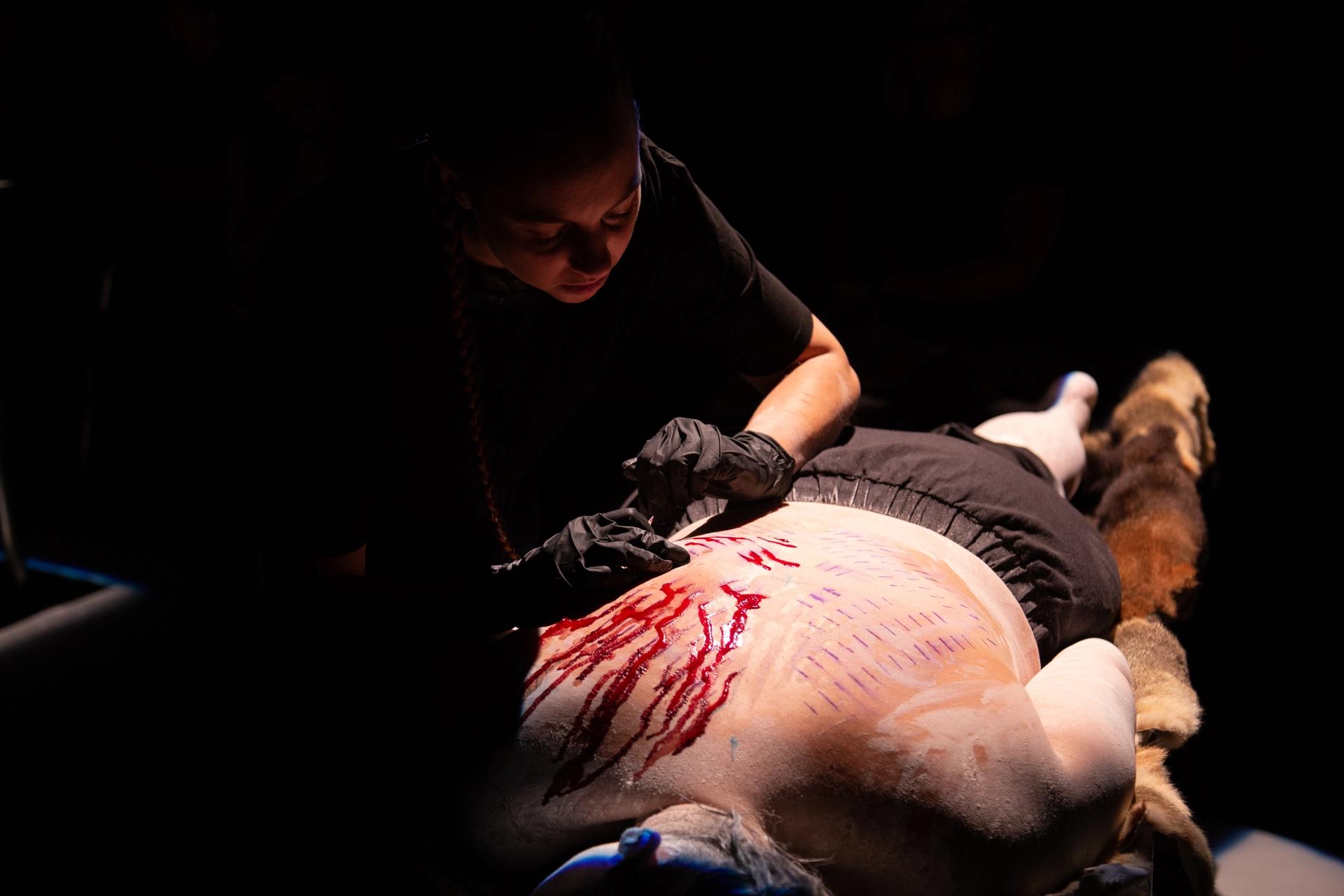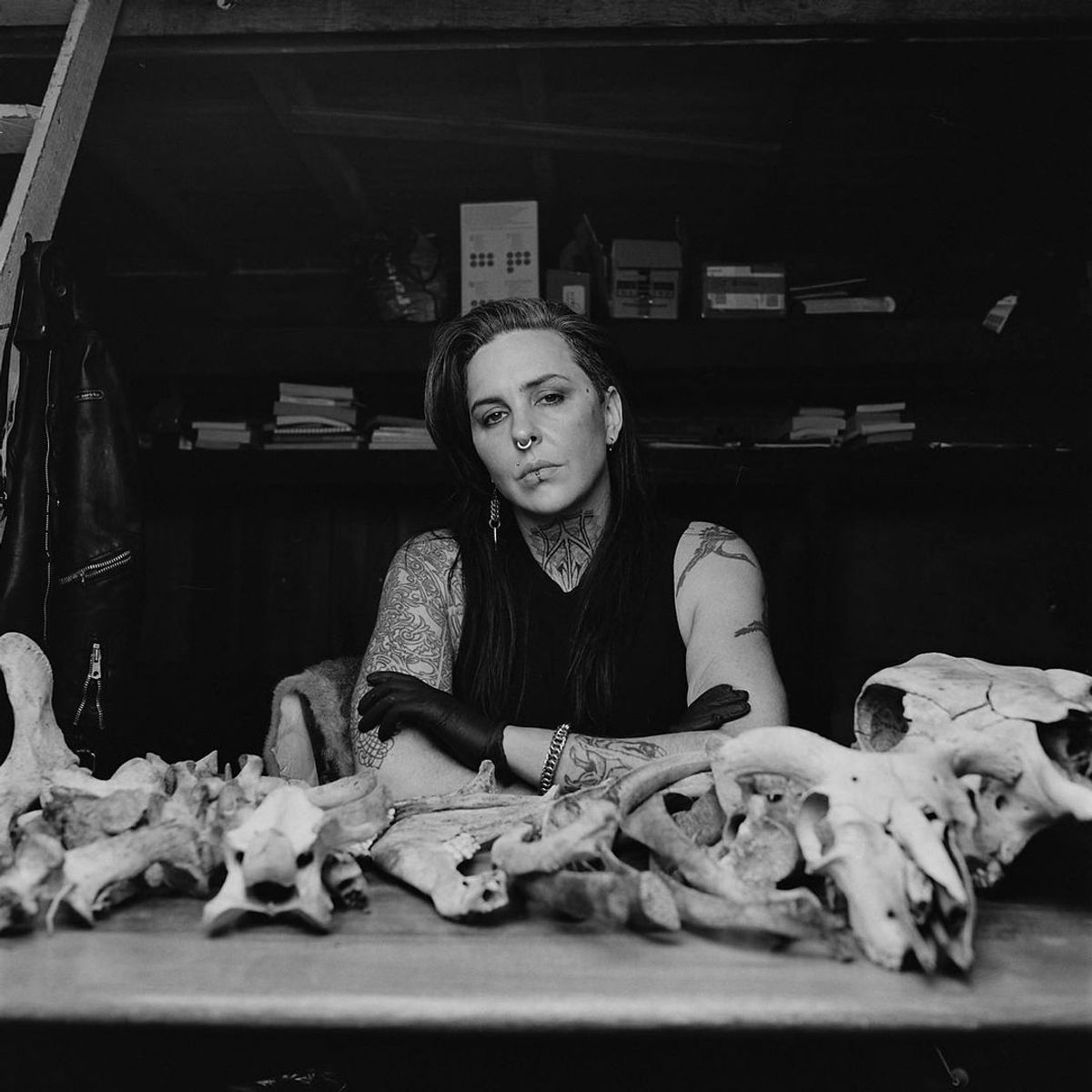The Wiradjuri artist SJ Norman is the recipient of the biennial Blake Prize, a A$35,000 (around $26,300) award granted by the Casula Powerhouse Arts Centre in Sydney that recognises artworks exploring religion and spirituality. The photographic diptych Cicatrix (All that was taken, all that remains) (2019) documents a visceral live presentation at Performance Space in New York in which the artist received 147 surgical incisions, representing the number of Aborigine who died in police custody in the last decade in Australia, and also evoking the ritual of scarification.
The 147-minute performance of ritual bloodletting—in which the artist was cut with a razorblade once each minute—was facilitated by First Nations assistants from Australia and Turtle Island. It aimed to “collectively focus our attention and intention towards the dissolution of settler-colonial carceral state”, Norman wrote in their artist statement.
Norman added: “Much like our BIPOC (Black, Indigenous, People of Colour) siblings on Turtle Island, Aboriginal Australians are grossly over-represented in incarceration and custodial mortality statistics. Based on the best available data, we make up 3% of the overall population and 27% of the prison population. Our Two-Spirit and LGBTQIA+ kin in particular face specific and elevated risks of harm or death whilst in prison.”

SJ Norman, Cicatrix (All that was taken, all that remains) (2019), part of a performance commissioned by Performance Space New York, 8 January 2019. Performance Space, New York.
Norman also requested that each viewer present for the 2019 performance give three volitional “offerings”, including remaining on-site for the full duration of the work; providing a cash donation via their ticket purchase to benefit the grassroots prison reform organisation Critical Resistance and offering a droplet of their own blood, which was drawn with a lancing device, mixed with salt water, then poured onto the East River following a procession from Performance Space at the closing of the event.
The Blake Prize, which was announced on 26 March, is Australia’s oldest art prize. Norman’s work was chosen from a pool of 65 finalists. The jurors included Megan Monte, the inaugural director of the Ngununggula in Bowral, an art centre devoted to championing the art of First Nations people; the artist Abdul Abdullah; and Rosemary Crumlin, a nun and art historian.
In a joint statement, the committee writes that Norman’s work made an immediate impact both visually and conceptually. “This is a subject of national importance and [we] anticipate that this prize will bring new attention and continued engagement by the public with this topic.”
Their statement adds: “We were also impressed by the ways the artist explores ideas of scarification and ceremonial languages of Aboriginal peoples into the work. Cicatrix, and the artist’s practice, resonates with the themes of this prize but also has the potential to expand how contemporary audiences engage with the themes of spirituality, belief and religion in our contemporary Australian context.”


